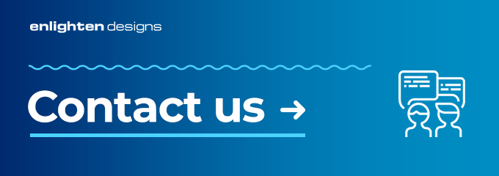Blog
Visualisation: The Key to No-Code Data Democracy
07 September 2021
For years, data in organisations was closely guarded – only those who needed it could have access to it, and making that case for access could be difficult. Today, a new concept is replacing that old mindset – that of data democracy. Data democracy makes information available to non-technical staff.
Read on to learn more about the concept of data democracy and how visualisations make it easier for employees without technical knowledge to share information in a compelling manner.

What Is Data Democracy?
When you share information, you can innovate and drive value at your organisation. That’s the basis of data democracy; it aims to tear down silos that restrict data usage to a select set of employees. Instead data democracy champions non-technical employees having access to data so they can come up with new ideas that could make the business more profitable.
The idea of data democracy intimidates some people – ‘What about security and privacy?’ they ask. However, data democracy doesn’t mean that you ignore security and privacy. On the contrary, it means giving people access to data in a way that protects the information and the user.
Why Is Data Democracy Becoming More Popular?
Companies all over the world have begun to see the value in data democracy. Here’s why: it has tangible business benefits.
A study from the consultancy McKinsey shows that the highest performing companies make data accessible across the organisation. These businesses also provide employees with self-service analytics tools to run customisable queries. As a result, they’re 40 times more likely to say that analytics have a greater impact on revenue than their lower-performing peers.
What Steps Should You Take to Implement Data Democracy at Your Company?
The idea of data democracy holds a certain appeal: give employees access to information, and they’ll come up with profitable ideas for your company. However, it’s not that simple.
Looking at raw data won’t give you any insights – you need a set of complex tools to help you make sense of information. Data scientists, who specialise in these tools and in deriving insight from data, make a valuable addition to your team if you can afford them. That’s where no-code analytics tools come in.
No-Code Analytics Tools
As the name implies, no-code analytics tools refer to software that helps people without a great deal of technical knowledge analyse data.
Users don’t have to worry about the technical details – all they have to do is select a KPI or figure out which business problem they’re trying to solve. The analytics tool does all the work. Yet, having the answers doesn’t mean the story ends there; the next step is to share information with your audience in a way that makes an impact.

Data Visualisations Help You Make Sense of Information
Let’s say you’re writing a report, and you want to include some compelling statistics to grab your audience’s attention. Which method would you choose: writing out the stats as text (‘our sales rose 17 per cent this year’) or in a graph to show the difference between this year’s and last year’s numbers?
If you want to grab your audience’s attention, you’d use the graph. Graphs are a type of data visualisation, which means you’re conveying information visually.
No-Code Data Visualisations and Data Democracy
To maintain data democracy, no-code data visualisations are crucial. No-code analytics tools enable employees to run queries on their own and make connections; no-code data visualisations allow them to share that information in a way that makes an impact.
We’ll illustrate with an example. Jamie uses a no-code analytics tool to run a query about the success of a recent marketing campaign. He discovers that one of the channels that everyone thought would perform well actually didn’t. Jamie realises he should share this information with the rest of the marketing department, and the best way to do that would be through a graph.
‘No-code data visualisations are crucial to a data democracy.’
Jamie isn’t an expert in creating data visualisations, but he doesn’t have to be. His company has invested in a no-code data visualisation solution. Jamie can quickly put together a graph that shows expected performance for channels and compare it to actual channel performance. Then, he can share it quickly before the next marketing meeting so the other team members make the right choice when creating upcoming campaigns.
Power BI’s No-Code Data Visualisations
Microsoft’s Power BI, a suite of business intelligence tools, gives you no-code data visualisations so you can implement and maintain data democracy at your organisation.
Power BI connects to cloud-based and on-premises data sources to maximise your insights. Information will always be up-to-date, so you never have to worry about inaccuracies. Moreover, data prep becomes fast and straightforward with built-in data modelling tools.
‘Microsoft Power BI gives you no-code data visualisations to maintain your data democracy.’
Users can also take advantage of new AI capabilities within Power BI. With AI, users can find patterns, gain a deeper understanding of what the data means, and predict future outcomes. Additionally, creating a data visualisation within Power BI is simple; use the drag-and-drop canvas and the library with hundreds of data visualisations from Microsoft and its partners, or make your own with Power BI’s open source custom visuals framework.
Once you’ve created a data visualisation, share it easily and quickly. You can generate a mobile-optimised report so audiences can access them on the go. Power BI gives you the freedom to publish to the cloud or on-premises. You can also embed Power BI reports into existing apps or websites, making it easier for everyone to get access to the information they need most when they need it.
Enlighten Supports Data Democracy with Power BI Implementations
At Enlighten, we’re big believers in the power of data democracy at organisations – safe, secure access to data helps new, valuable ideas come to the surface. We’re also proud partners with Microsoft, and we have extensive experience implementing Power BI. To learn more about the impact of no-code data visualisations on data democracy, Contact Us.
Recent Articles
- Look what happens when the creator of the Enlighten Aquarium gets a 3d printer!
- Performance of PHP Web Applications migrated to Azure PaaS
- Azure Static Web Apps - Performance
- Legacy Application Decomposition Patterns: A Key to Successful Application Modernisation
- Google's Gemini 1.0 - A Formidable New Player in AI

